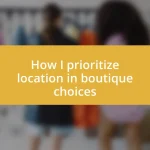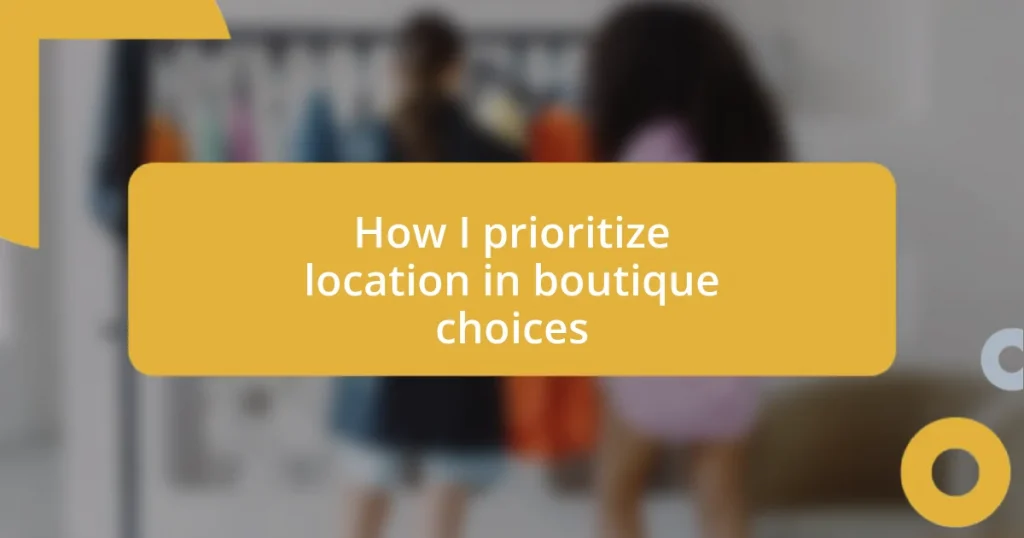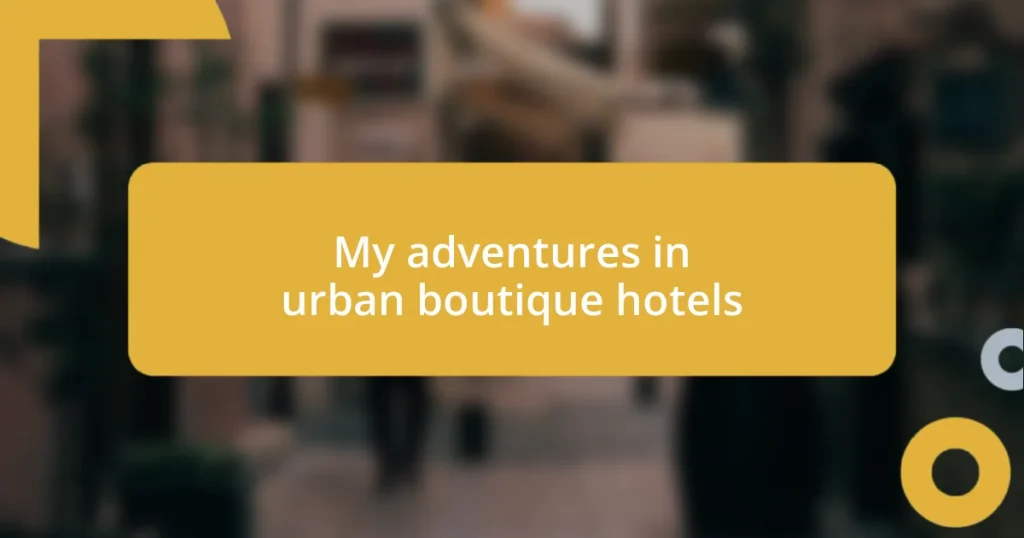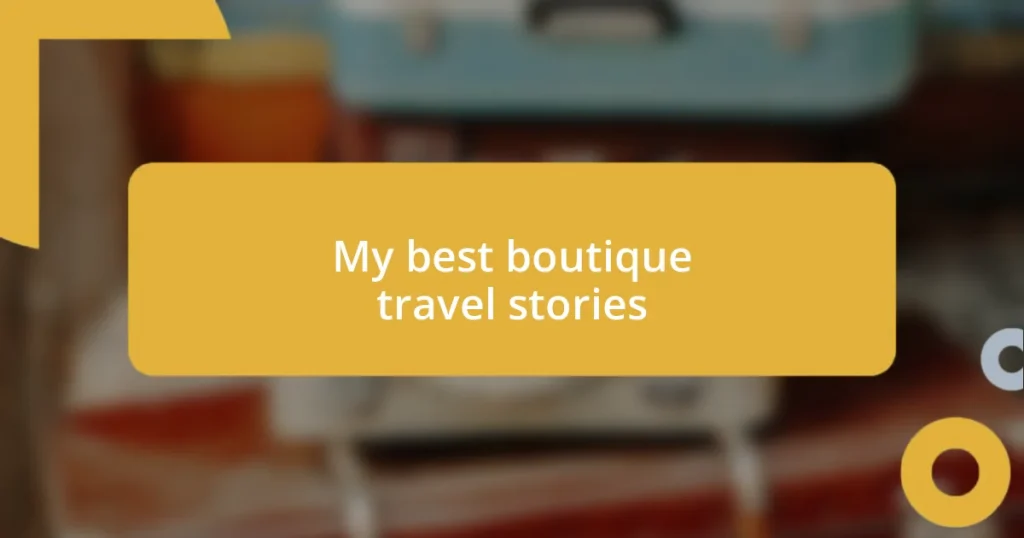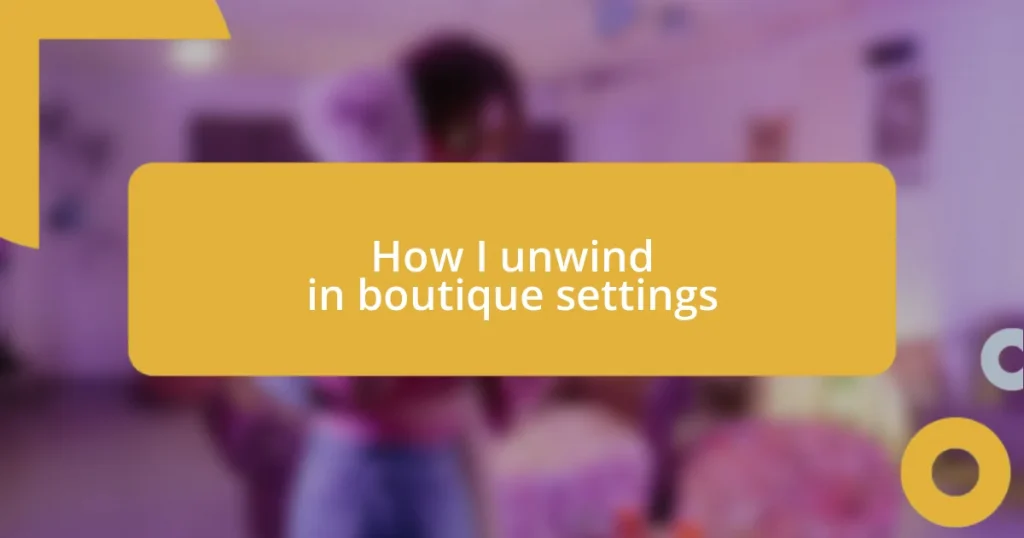Key takeaways:
- Strategic boutique locations enhance customer experiences, attract foot traffic, and contribute to brand identity.
- Key factors in location selection include demographics, nearby businesses, safety, lease terms, and accessibility to maximize visibility and sales.
- Observing competition and neighborhood vibes is crucial for creating a unique atmosphere and a memorable shopping experience that fosters community engagement.
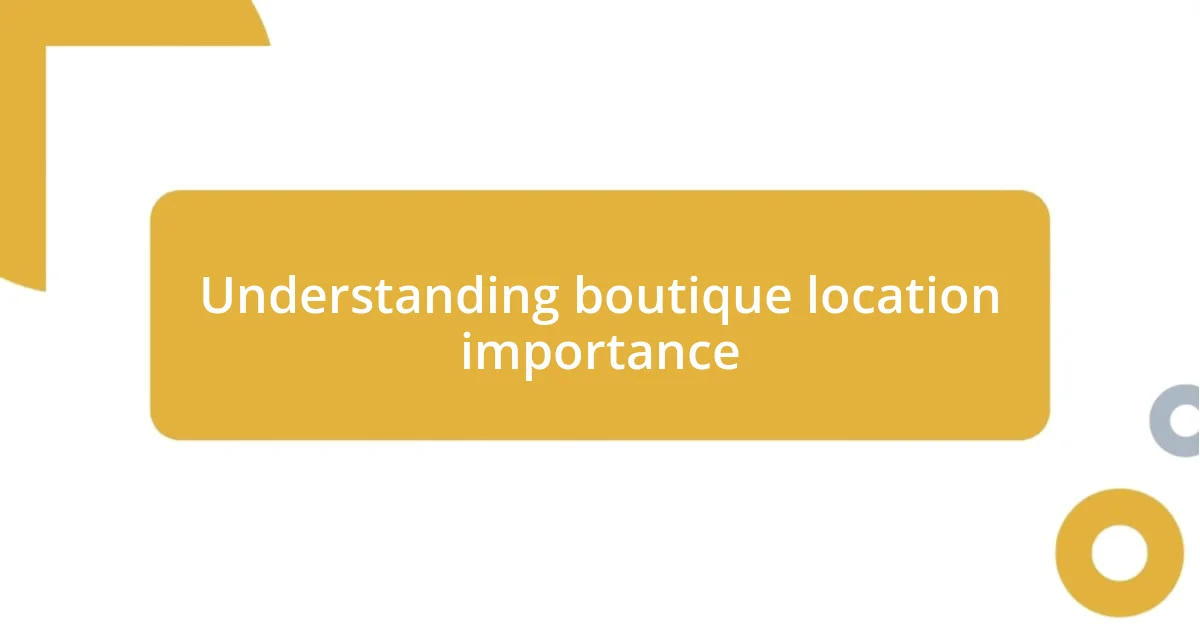
Understanding boutique location importance
When I think about boutique locations, the first thing that comes to mind is how a store’s environment can shape the shopping experience. Imagine walking into a charming boutique nestled in a vibrant neighborhood versus one tucked away in a less-traveled area; it’s like night and day! Enthralling locations not only attract foot traffic but also create an inviting atmosphere that encourages people to explore.
I remember visiting a quaint little boutique in a bustling arts district. The shop was surrounded by lively cafés and galleries, making it a delightful stop during my stroll. I found myself drawn in by the energy of the place, which made the experience not just about shopping, but about being part of a community. Isn’t it fascinating how location can transform a simple style choice into an adventure of discovery?
Moreover, choosing a strategic location isn’t just about the scenic value; it plays a crucial role in branding and outreach. For instance, a boutique positioned near luxury establishments can evoke a sense of exclusivity, attracting clientele ready to invest in high-quality items. It prompts the question: How crucial is it for a boutique to align itself with the surrounding businesses to capture its desired market? In my experience, the right location can be the difference between simply selling products and cultivating a memorable brand experience.
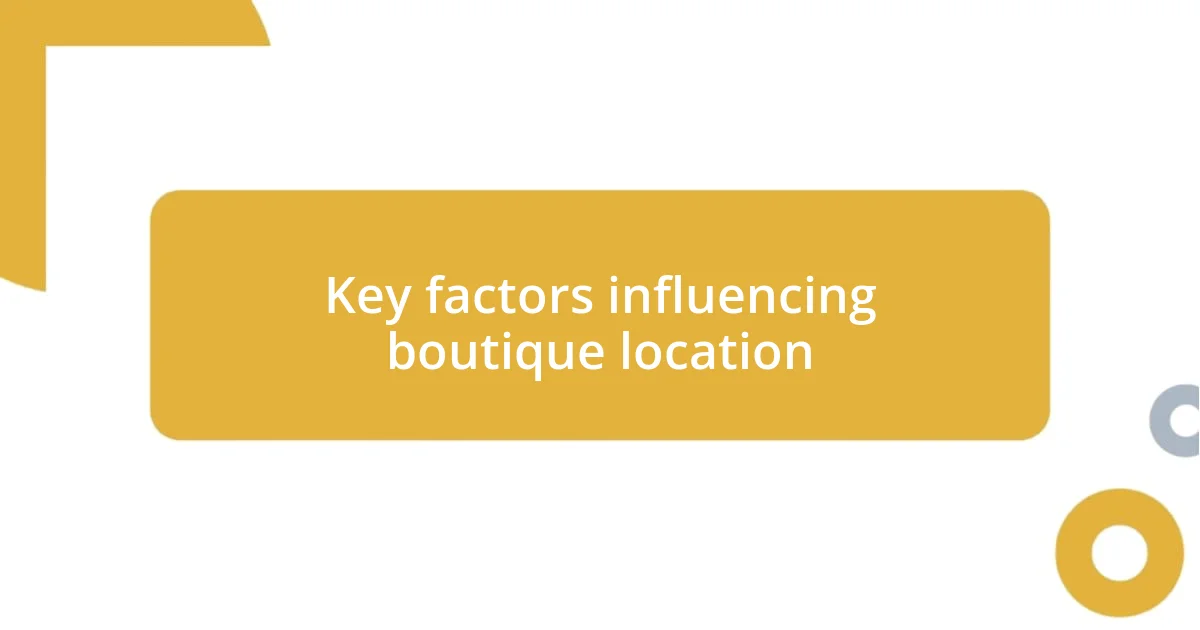
Key factors influencing boutique location
When considering a boutique’s location, foot traffic is often a game-changer. I once worked with a fashion boutique that chose a spot right across from a popular farmer’s market. The weekends transformed into bustling days where shoppers swung by on their way to grab fresh produce. I saw firsthand how increased visibility attracted a diverse crowd, eager to pop in and see what unique finds awaited them. The energy of the neighborhood directly impacted sales.
Additionally, accessibility plays a significant role. A boutique that’s easy to reach—whether through public transport or ample parking—ensures that more customers can explore what it has to offer. Here are some key factors influencing boutique location:
- Demographics: Understanding the target market’s characteristics helps in selecting a location that resonates with potential customers.
- Nearby Businesses: Aligning with popular stores or restaurants can enhance store traffic, making it a part of a shopping destination.
- Safety: I’ve noticed that shoppers feel more at ease in well-lit, secure areas, which often leads to longer visits and increased spending.
- Lease Terms: High rent can be a burden, so it’s essential to find a balance between location desirability and financial feasibility.
- Seasonal Variability: Some locations thrive during specific seasons; personally, I’ve seen beach boutiques flourish in summer while struggling in winter.
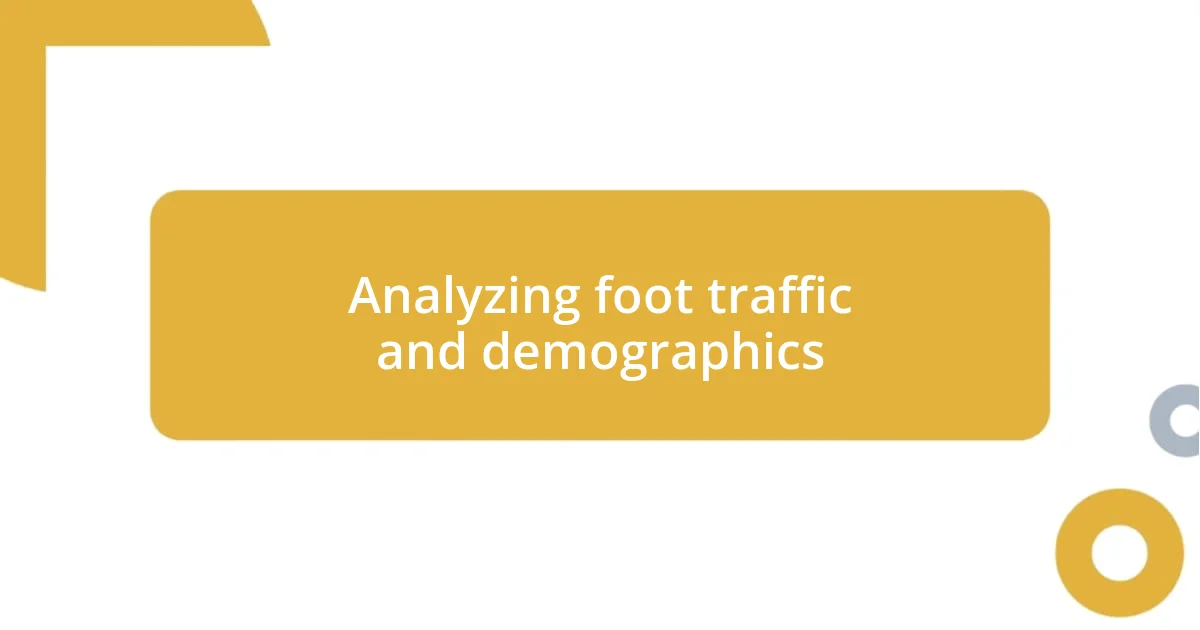
Analyzing foot traffic and demographics
Analyzing foot traffic and demographics is essential for deciding where to place a boutique. I remember analyzing data for a new store I was involved with, focusing on traffic patterns throughout the week. By observing peak times and understanding the demographics—who frequented the area, their ages and interests—I could pinpoint when potential customers were most likely to walk by. It changed my perspective on how important it was to be at the right spot at the right time.
The demographics tell a story that goes beyond just numbers. A boutique located in an artsy neighborhood tends to attract creative types or people who appreciate unique styles. I recall standing outside one boutique and chatting with customers who shared their fondness for handmade items, which reflected both the store’s offerings and the community’s vibe. Knowing your audience allows for tailored marketing strategies that resonate deeply with potential shoppers.
Now, let’s look at a comparison of foot traffic and demographics:
| Factors | Analysis |
|---|---|
| Foot Traffic | High foot traffic areas, like malls or markets, often yield more spontaneous visits, increasing sales potential. |
| Demographics | Understanding the local population helps tailor products and marketing to fit the interests and needs of the customers. |

Assessing competition in the area
When I evaluate potential locations for a boutique, I always keep an eye on the competition in the area. A few years ago, I found a charming street lined with boutiques, but one particular shop caught my attention—it had a similar aesthetic to what I envisioned for my own store. It got me thinking: would my unique branding set me apart enough to draw in customers, or would I merely blend into the existing landscape? Assessing the strengths and weaknesses of nearby shops is crucial; after all, it helps define how I can carve out my niche.
I often conduct informal surveys while wandering through potential neighborhoods. Observing how other boutiques engage their clientele can be incredibly revealing. I once stopped by a local favorite that hosted pop-up events, which created a lively atmosphere that customers flocked to. This prompted me to ask myself: how can I replicate that energy while offering something distinct? It’s in these moments of observation that I gather ideas and insights to refine my approach.
Moreover, understanding the competition goes beyond just what they sell; it’s about their overall vibe. I’ve seen many boutiques succeed not just because of what’s on their racks, but due to the experience they create. A boutique across from a bustling coffee shop once drew me in with its warm, welcoming window displays, luring in even those who had no intention of shopping. This taught me that the surrounding competition can enhance or detract from my boutique’s potential. So, the question I always ponder is: how can I innovate within this landscape to ensure my boutique stands out?
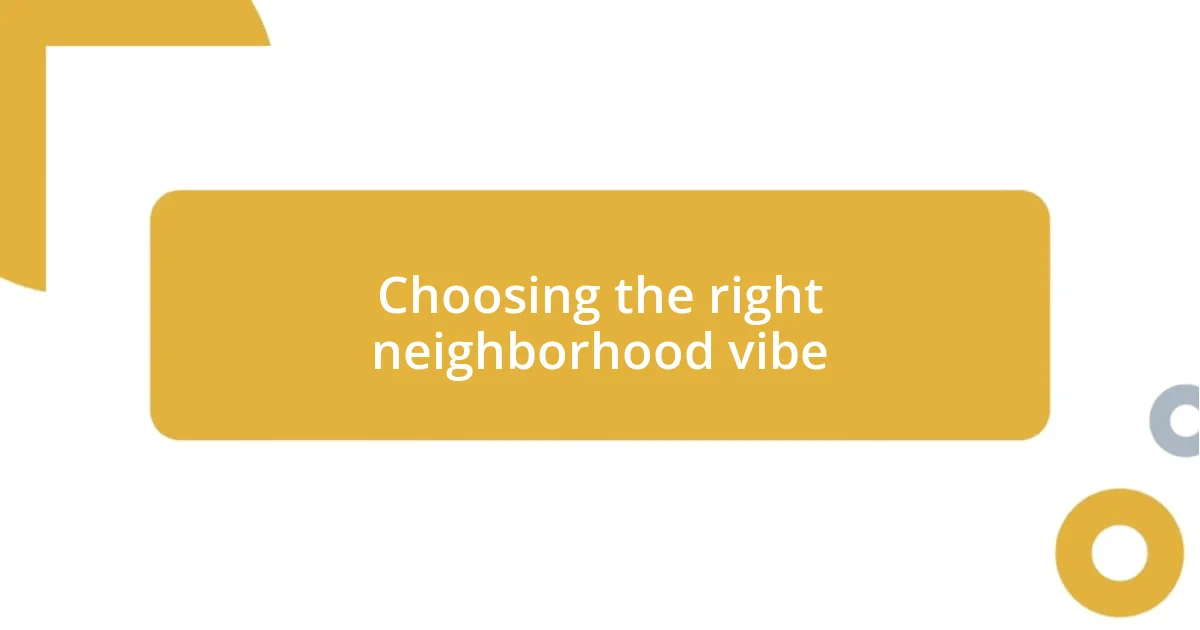
Choosing the right neighborhood vibe
Choosing the right neighborhood vibe can transform the shopping experience. I remember visiting a neighborhood with a mix of boutiques and common spots like art galleries and cute cafés. The energy was palpable, and I found myself lingering longer than I had planned. Being surrounded by this creative atmosphere not only made me feel inspired but also indicated that the community was receptive to new and distinctive offerings. This taught me that a neighborhood’s vibe can attract customers who appreciate the uniqueness of what I plan to sell.
I also take note of the locals’ interactions with their environment. There was one area where I observed people casually chatting outside a boutique, sipping coffee and laughing. The warmth of that scene stuck with me. It made me realize that choosing a neighborhood where people gather fosters community bonds that can lead to loyalty. Imagine if my store could contribute to such a vibrant scene—it’s a compelling prospect.
Lastly, I ask myself how the surroundings influence the shopping journey. A quaint neighborhood with cobblestone streets evokes a different feeling than a fast-paced urban setting. I remember once stepping into a boutique located in a bustling area, only to be greeted by an overwhelming noise level that made browsing difficult. The lesson? The neighborhood vibe should harmonize with the customer experience I want to create. After all, what atmosphere do I want my customers to remember when they leave my boutique?
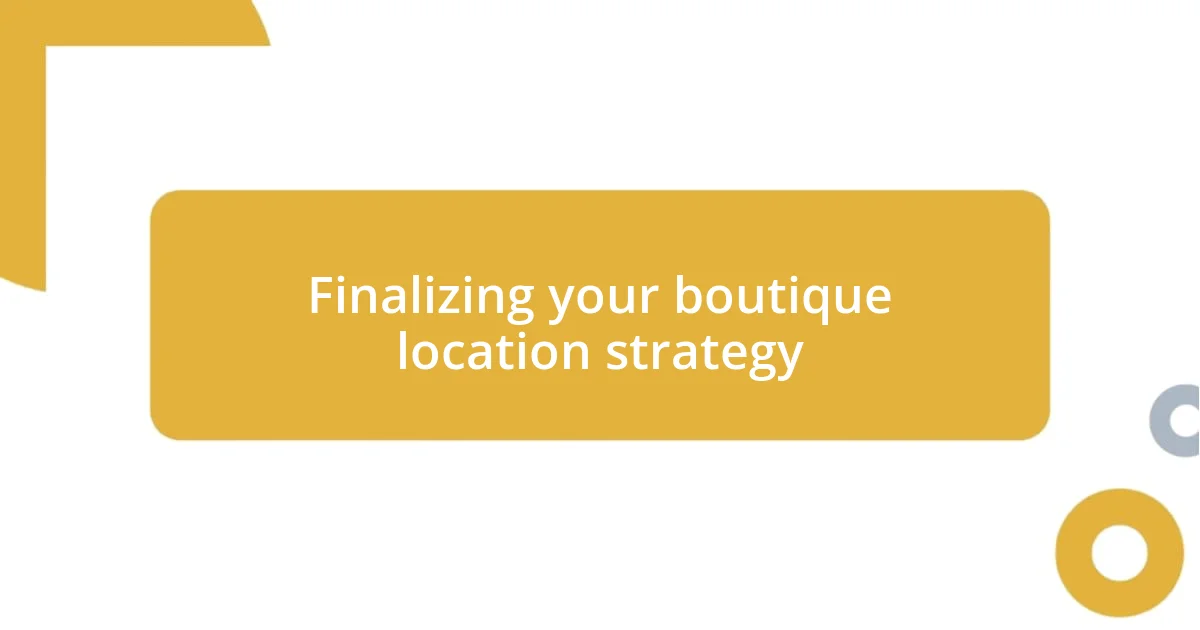
Finalizing your boutique location strategy
Finalizing a boutique location strategy means tying together all the research and observations I’ve gathered. One memory stands out: when I was choosing a spot for my boutique, I stumbled upon a local collection of shops hosting a monthly market. The buzz of excitement reminded me of the power of events in driving foot traffic. It made me realize that my final decision needed to consider how I could leverage local happenings to boost my visibility. How could I align my brand with the community’s culture?
Sometimes, I’ve found that it’s not just about the location but also about accessibility. I recall visiting a stunning boutique tucked away in a less-traveled street. While the interiors mesmerized me, the location hampered customer flow. I learned that a hidden gem can be beautiful, but if it’s not easy to find, it might be overlooked. Will my boutique’s location invite exploration, or will it remain a secret shared only among a few?
Ultimately, my location strategy comes down to simplicity and connection. I often visualize how customers would move through the area surrounding my store. I remember stopping by a boutique where I noticed clear signage and inviting displays—everything drew me in effortlessly. This sense of ease is vital. Will my customers feel welcomed and called to explore? If I can design a location that encourages collaboration and interaction, I know I’ll be setting the stage for a thriving boutique.






